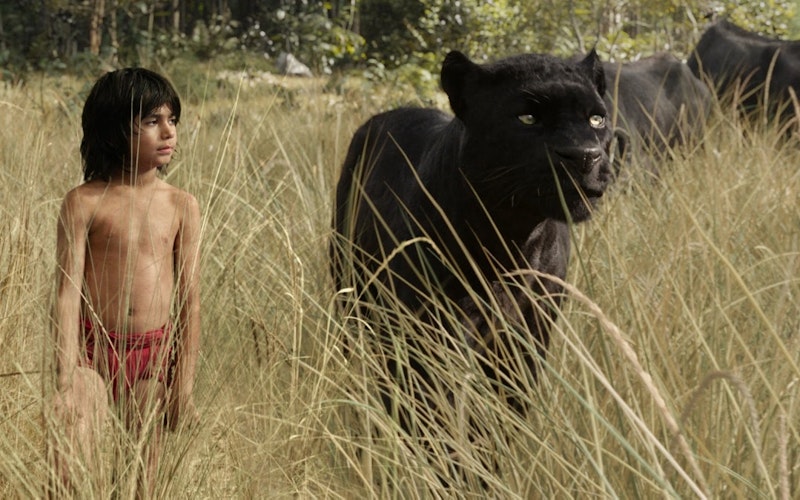
Movies
The Jungle Book’s cultural mandate
From Rudyard Kipling’s original stories to the beloved 1967 cartoon to the new, special-effects extravaganza, The Jungle Book has always been more than an adventure yarn. In all its various forms, this tale has also cast a variety of visions for how humanity should relate to nature.
This is, of course, a theme that goes all the way back to Genesis — specifically, to the cultural mandate of Genesis 1:28. There, Adam and Eve are told to “rule over the fish in the sea and the birds in the sky and over every living creature that moves on the ground.”
In the opening of the new Jungle Book, the situation is somewhat in reverse. Found helpless and alone by Bagheera the panther, the human child Mowgli (Neel Sethi) only survives thanks to the care and kindness of a variety of wild creatures. Raised by a pack of wolves, the boy now scampers through the Indian jungle with carefree abandon, but only because he knows that Bagheera and others will protect him.
Their protection, however, has its limits. Watching Mowgli closely is Shere Khan, a Bengal tiger silkily voiced by Idris Elba. Having been wounded by a man, Shere Khan sees Mowgli as a threat, and will do anything in his power to rid the jungle of humanity. “You change your hunting ground for a few years, and everyone forgets how the law works,” he hisses while pacing before the other animals at a watering hole. “Well, let me remind you. A man-cub becomes a man, and man is forbidden!”
Shere Khan offers one vision of creation: a human-free zone in which nature literally runs its course. In some ways, this doesn’t seem like a bad idea. Just this week Ringling Bros. and Barnum & Bailey circus made good on its promise to phase out the use of elephants in its shows. Considering it took 145 years for Ringling Bros. to realize its mistake with such magnificent creatures, you have to wonder if a created order without people might not be better off. But that’s not how God envisioned things. Indeed, people are at the center of His creation. He not only made us in His image, He also empowered us to “rule” (even if, in the wake of the Fall, we’ve struggled to determine what that means).
King Louie wants the power that comes with the cultural mandate, but not the responsibility.
In The Jungle Book, the gargantuan orangutan King Louie (Christopher Walken) promotes another vision of the created order. Louie wants to usurp humanity’s hallowed status as ruler by attaining fire, or “man’s red flower.” And so he kidnaps Mowgli, assuming he knows the secret of fire, and brings the boy to the decrepit, abandoned palace from which he “reigns.” But Louie’s vision is also flawed. He wants the power that comes with the cultural mandate, but not the responsibility. And in his ruthless pursuit of Mowgli, the walls of his kingdom literally come crumbling down, another tower of Babel (and baboons) reduced to rubble.
There are other visions for the created order in The Jungle Book, from Bagheera’s desire to mark a sharp boundary between animal and humankind by bringing Mowgli to a human village to Baloo the bear’s libertarian suggestion that he and Mowgli lazily pass the days enjoying the “bare necessities” of life. Yet these also run counter to the vision we’re given in Genesis. Andy Crouch, in his book Culture Making, describes the Garden of Eden this way: “…those who are made in his image will also be both creators and rulers. They will have the unique capacity to create — perhaps not to call something out of nothing in quite the way that God does in Genesis 1:1, but to reshape what exists into something genuinely new. And they will have a responsibility to care for what God has made. …They will sort out the cultivated from the wild. Human beings will be gardeners.”
Mowgli isn’t exactly a gardener, but he is a cultivator. Throughout the film we see certain tools he has crafted: a small bowl carved from wood for scooping up water; a harness of vine for reaching honeycombs with Baloo. In a wonderfully heroic sequence, he fashions another vine rope to rescue a baby elephant who has fallen into a mud pit — human ingenuity as salvation.
This notion of humankind’s dominion via creative cultivation exists not only in the narrative of The Jungle Book, but also in the film’s very texture. Just as Mowgli has his tools, the movie’s countless animators, sound designers and motion-capture technicians employ the latest in filmmaking technology to give the flora and fauna an electric, immersive authenticity. You’d never know that Neel Sethi, as Mowgli, is often the only “real” thing on the screen. And so The Jungle Book is not only a slickly entertaining kids’ flick from Walt Disney Pictures. It’s also an example of humanity cultivating God’s garden in a way that Adam and Eve could never have imagined.
Topics: Movies